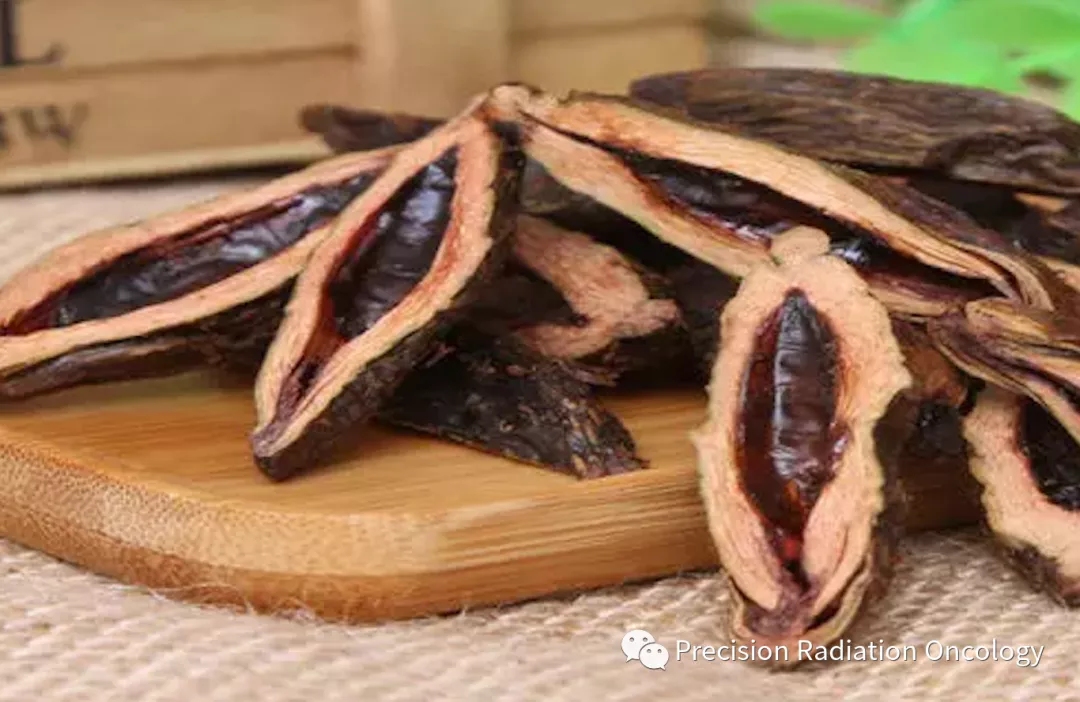
槟榔果是一种产于热带的水果,自古以来就是中国东南沿海各省居民迎宾敬客、款待亲朋的佳果。在中国台湾、海南及印度等地,当地人就是槟榔的忠实粉丝,不仅把槟榔当零食,还把槟榔、烟叶和其他一些原料玩出混搭。促销台词口口相传:槟榔加烟,法力无边;槟榔加酒,天下我有。
槟榔含有槟榔碱,此物质可以刺激内源性肾上腺皮质激素的分泌,导致脑垂体释放更多的促肾上腺皮质激素,从而会让人非常兴奋。槟榔和咖啡因、烟酒类似,属于第四类精神活性物质,因此长期食用会导致上瘾。
本期,我们一起来了解一下口腔癌。
口腔癌是发生在口腔的恶性肿瘤的总称,大部分属于鳞状上皮细胞癌,即所谓的黏膜发生变异。口腔癌是头颈部较常见的恶性肿瘤之一。常见的口腔癌前病变有黏膜白斑和粘膜红斑。导致口腔癌的常见原因有长期嗜好烟酒、口腔卫生差、异物长期刺激、营养不良、微量元素摄入不足等。
Oral cancer describes cancers that originate in the oral cavity. The oral cavity includes the lips, the gingiva, or gums, the floor of the mouth, the buccal mucosa which is the soft lining of the inner lips and cheeks, the anterior or front two-thirds of the tongue, the hard palate which is the tough front part of the roof of the mouth, and the retromolar trigone which is the mucosa right behind the last molars on the bottom row of teeth. Behind the oral cavity is the oropharynx. The oropharynx includes the soft palate which is the soft part of the roof of the mouth right behind the hard palate, the tonsils, the walls of the throat, and the posterior or back one-third of the tongue.
口腔癌指起源于口腔的癌症。口腔包括唇、牙龈、口底、颊黏膜(脸颊与嘴唇内表面的一层软称或黏膜组织)、舌部前2/3,硬腭(上颚质地坚硬的部分)、磨牙后三角(下颌最后一颗磨牙后的黏膜区)。口腔后是口咽部。 口咽包括软腭,即上颚质地柔软的部分,位于硬腭、扁桃体、咽喉壁、舌后1/3。
The oral cavity and oropharynx are lined by epithelium - and there are a few different types. The first type of epithelium is called keratinized stratified squamous epithelium. These epithelial cells produce keratin, a protein that makes the layer tough, and protects against normal wear and tear from food and drinks. Beneath the epithelium, there’s another layer called the basement membrane made of tough connective tissue, and below that is the lamina propria which yet more connective tissue that houses blood vessels, lymphatics, nerves, and immune cells. The oral surfaces covered in keratinized epithelium include the hard palate, the dorsal surface, or top, of the tongue, and the gingiva.
口腔和口咽均由上皮细胞构成。上皮细胞构成有几种不同类型。第一种上皮细胞为:角化复层鳞状上皮。此类上皮细胞可产生角蛋白,可使表层坚硬,保护黏膜免受食物的磨损。 上皮细胞下,还有一层为基底层,由坚硬的结缔组织构成。基底层下为固有层,其中有大量结缔组织包含了血管、淋巴管、神经和免疫细胞。覆盖角化上皮细胞的口腔表面包括硬腭、舌的背侧面和牙龈。
A second type of epithelium is non-keratinized stratified squamous epithelium, and it contains cells that don’t produce much keratin, making this layer less tough. The oral surfaces covered by non-keratinized stratified squamous epithelium include the buccal mucosa, the floor of the mouth, the lateral and ventral, or bottom, surfaces of the tongue, the soft palate, and the retromolar trigone.
第二种类型的上皮细胞为非角化复层鳞状上皮,由于其不包含可以产生角蛋白的细胞,因此该层不那么坚硬。覆盖非角化复层鳞状上皮的口腔表面包括颊黏膜,口底,舌的两侧、腹侧(或舌底),软腭以及磨牙后三角。
Now the mucosal tissue in the oral cavity can undergo several premalignant pathological changes. The first one of these is leukoplakia, where leuko- means white and -plakia means a flat, raised patch or plaque. And leukoplakia specifically relates to a white plaque with no clear underlying cause. These leukoplakias are usually painless but can’t be easily scraped away. Now, the exact cause for leukoplakia is unknown, but a known risk factor is tobacco use.
口腔黏膜组织可以出现一些癌前病变。第一种是黏膜白斑,leuko-意思是白色的,-plakia意思是扁平的、凸起的斑点或斑块,而且黏膜白斑特指无明确诱因的白色斑块。黏膜白斑通常无痛,但却不易清除。现在,白斑的确切病因还不清楚,但一个已知的危险因素是吸烟。
Early on, these lesions are usually pretty thin, so it’s called thin leukoplakia. These can either go away on their own, remain unchanged, or grow and become thicker, at which point it’s called thick leukoplakia. If it becomes bumpy it’s called nodular leukoplakia, and if it becomes wart-like it’s called verrucous leukoplakia. Now a more serious form of leukoplakia is called proliferative verrucous leukoplakia, which usually affects women, with no risk factors and it has a predilection for gingiva and causes multiple rough white lesions that grow and spread, and in most cases, eventually develop into squamous cell carcinoma.
早期,这些病变通常很薄,所以被称为薄白斑。 这些白斑可以自行消失,保持不变,也可以生长变厚,此时称为厚白斑。如果白斑凹凸不平,就叫做结节性白斑,如果是疣状,就叫做疣状白斑。现在一种更严重的白斑叫做增生性疣状白斑,通常会影响女性,没有危险因素。而且此类白斑易侵犯牙龈,会导致多处粗糙的白色病变生长扩散,在大多数情况下,最终发展成鳞状细胞癌。

At the cellular level, leukoplakia typically shows a thickened keratin layer. Since keratin absorbs water, a thick keratin layer looks white when it’s wet. At a cellular level, leukoplakia may show cells that have undergone some degree of dysplasia, meaning they look abnormal in some way, but are not cancerous, or malignant, yet. However, leukoplakia is considered a precancerous condition, meaning that compared to normal tissue, it’s more likely to develop into a cancer in the future. And that change could happen at the microscopic level, meaning that the lesion might look the same on the outside, even though the cells have become cancerous.
在细胞学层面上,白斑通常表现为角质层增厚。由于角蛋白吸收水分,所以在潮湿环境中厚厚的角蛋白层看起来是白色的。在细胞学层面上,白斑可能显示细胞表现出某种程度的发育不良,也就是说它们在某种程度上看起来不正常,但还不是癌变。然而,白斑被认为是一种癌前状态,这意味着与正常组织相比,白斑在未来更容易发展成癌症。这种变化可能在显微镜下才能看到,也就是说,即使细胞已经癌变,病变的外观也可能是一样的。
Generally speaking, the transition from dysplastic cells to malignant cells occurs gradually. And as cells become more and more dysplastic the lesions sometimes develop red spots, and at that point it’s called erythroleukoplakia. Cells in these red areas have suffered serious damage to their DNA and don’t mature normally and therefore can’t produce keratin. And as they become more and more atypical, the more immature becomes the epithelium and it will start becoming thinner or atrophic and allow more of the underlying blood vessels to be seen through the mucosa. At that point the lesion will be completely red and will be called erythoplakia.
一般来说,由发育不良的细胞转变为恶性肿瘤细胞的过程是循序渐进的。随着细胞逐步变得发育异常,病变有时会呈现红点,此时可被称为红白斑。这些红色区域的细胞DNA受到严重损伤,不能正常成熟,因此不能产生角蛋白。当细胞变得越来越异常,不成熟的上皮细胞就会开始变薄或萎缩,并可以透过黏膜看到血管。此时,病变将完全变红,被称为红斑病。
Erythroplakias are more serious than leukoplakia because almost always when they are removed and examined under the microscope they will show severe dysplasia, or early cancer. Now, a lesion that looks like leukoplakia, but isn’t, is an area of frictional keratosis. That’s where there’s repeated physical trauma like rubbing of the tooth surface against the mucosa of the cheeks. For example, after a dental procedure that leaves a rough tooth surface, or a broken tooth rubbing against the mucosa. It’s a normal hyperplastic response, meaning the epithelial cells in the area divide more than usual and build up a protective layer of keratin. It’s a bit like developing a callus on your hands after spending the weekend raking leaves. An area of frictional keratosis is not a precancerous lesion and usually fades away once the irritation stops.
红斑病比白斑病更严重,因为几乎每次切除并在显微镜下检查时,都会显示出严重的异型增生或癌变早期征象。视频中是一个看起来像白斑的病变,其实是一个摩擦性角化的区域。这是牙齿表面摩擦颊黏膜而反复出现的物理损伤。例如,在牙科手术后,粗糙的牙齿表面或破损的牙齿摩擦黏膜。这是一种正常的增生反应,意味着该区域的上皮细胞比平常分裂得更多,并形成一层角蛋白保护层。这有点像在周末清扫了树叶后,手上长出的老茧。摩擦性角化区域不是癌前病变,通常在刺激停止后消失。

Most of the oral cavity is lined by stratified squamous epithelium, so the majority of cancers that arise are squamous cell cancers. Squamous cell cancers arise from squamous cells that undergo genetic mutations that either activate proto-oncogenes or inactivate tumor suppressor genes. When proto-oncogenes, like epidermal growth factor receptor and ras, are activated, it turns them into oncogenes that promote cell division. And when tumor suppressor genes, like the genes that encode proteins p53, p16, and the retinoblastoma protein, also called pRb, are inactivated, it removes the inhibition to cell division. So together there’s uncontrolled cell division which can give rise to a tumor.
口腔的大部分由复层鳞状上皮构成,因此发生的大多数癌症是鳞状细胞癌。鳞状细胞癌是由鳞状细胞发生基因突变引起的,这些突变要么激活了原癌基因,要么使抑癌基因失活。当原癌基因,如表皮生长因子受体(EGFR)和RAS基因被激活时,它们就会变成促进细胞分裂的原癌基因。当肿瘤抑制基因,如编码蛋白的p53基因、p16基因和视网膜母细胞瘤蛋白(也称为pRb基因)失活时,就会消除对细胞分裂的抑制。所以细胞分裂失控会导致肿瘤。
As the cancer cells divide they can sometimes gain the ability to penetrate through the basement membrane, and at that point it’s considered a malignant tumor. The malignant cells can then invade surrounding tissues like the salivary glands, muscle, and even get into the blood and lymphatic systems, and metastasize, or travel, to other areas of the body. It’s a bit like a toddler learning to get out of the crib and then running rampant through the house.
当癌细胞分裂时,它们有时能穿透基底膜,此时被认为是恶性肿瘤。恶性细胞可以侵入周围组织,如唾液腺、肌肉,甚至进入血液和淋巴系统,并转移到身体的其他部位。这有点像一个蹒跚学步的孩子从婴儿床里爬出来,然后在屋子里到处乱跑。
Proliferative verrucous leukoplakia can turn into a particular type of squamous cell cancer called verrucous carcinoma, and it’s also sometimes called snuff-dipper’s cancer since it is more common among users of snuff and other forms of chewing tobacco. Generally speaking, malignant cells are irregularly-shaped with darkly staining nuclei, enlarged nucleoli, and produce abnormal keratin that look like pearls - so they’re called keratin pearls.
增生性疣状白斑可转变为一种特殊类型的鳞状细胞癌,称为疣状癌,有时也被称为“鼻烟斗”癌,因为它更常见于鼻烟和其他形式的咀嚼烟草的使用者。一般来说,恶性细胞形状不规则,细胞核呈暗染,核仁增大,并产生异常的角蛋白,看起来像珍珠-所以他们被称为角化珠。
It’s thought that most of the time, co-carcinogenesis is necessary to cause oral squamous cell carcinoma. That means that more than one carcinogen, or causative factor, is needed to cause the disease - like abusing alcohol and using tobacco. Many carcinogens come into contact with a wide area within the oral cavity and oropharynx, so the idea is that they cause field cancerization. This means that the entire contacted area or field undergoes genetic changes and is more likely to develop cancer in the future.
大多数情况下,致癌协同作用是引起口腔鳞状细胞癌的必要因素。这意味着不止一种致癌物或致病因素可以导致癌症,比如酗酒和吸烟。许多致癌物与口腔和口咽大面积接触,因此,会导致区域癌变。也就是说整个接触的区域或范围都会产生基因变化,未来更可能发展成癌症。
In addition to squamous cell carcinomas other types of oral cancers include adenocarcinomas, which develop in glandular cells like those of the salivary glands beneath the mucosa, extranodal lymphomas which develop in lymphocytes, and melanomas, which develop in melanocytes, found all over the mucosal epithelium, but most often in the hard palate.
除鳞状细胞癌外,其他类型的口腔癌包括腺癌,其在腺细胞中发育,如黏膜下的唾液腺细胞,结外淋巴瘤在淋巴细胞中发育,黑色素瘤在黑素细胞中发育,常见于整个黏膜上皮,但最常发生在硬腭。
Squamous cell carcinoma is also known to arise at the lip vermillion in those who smoke, right at the location where a person holds the smoking device, such as a cigarette or pipe. However, most lip vermillion cancers result from chronic sun damage and are associated with actinic cheilitis, a precancerous rough patch on the lip. The most common locations for oral cancer are the lateral and ventral surfaces of the tongue and floor of the mouth, and the lower lip vermilion because it’s exposed to more sun than the upper lip.
鳞状细胞癌也被认为起于抽烟者的唇红处,正好位于吸烟者叼着烟具(如香烟或烟斗)的地方。然而,大多数唇癌都是由慢性日晒损伤引起的,与光化性唇炎有关,光化性唇炎是唇部的一种癌前粗糙斑块。口腔癌最常见的部位是舌头的两侧和腹侧、口底、下唇(下唇比上唇接受更多日晒)。
Well known risk factors for oral squamous cancer include tobacco smoking, alcohol abuse, chewing betel quids or paan, UV radiation, exposure to metal dust or chemicals like phenoxyacetic acid; vitamin and mineral deficiencies, like a severe form of iron-deficiency called Plummer-Vinson syndrome, and various immune deficiencies. Oropharyngeal cancers are strongly associated with infection by human papillomavirus type 16, but interestingly, tumors of the oral cavity, like the lateral tongue and floor of the mouth are not usually associated with HPV 16.
众所周知,口腔鳞癌的危险因素包括吸烟、酗酒、嚼槟榔、紫外线辐射、接触金属粉尘或苯氧乙酸等化学物质;维生素和矿物质缺乏症(如严重缺铁吞咽困难综合症,Plummer-Vinson综合征),以及各种免疫缺陷。口咽癌与人乳头瘤病毒(HPV)16型感染密切相关,但有趣的是,舌侧和口底口腔肿瘤,通常与人乳头瘤病毒16型无关。

The symptoms of oral cancer include numbness or changes in sensation in the mouth and throat, a hoarse voice, pain or difficulty with chewing or swallowing, and both painless and painful lumps, sores, or discolorations in the mouth that don’t heal. Signs of precancerous development include areas of leukoplakia, erythroplakia, erythroleukoplakia or any other abnormal appearing tissue or masses. In other words, white or red lesions without an obvious traumatic source and have a rough, irregular, velvety or speckled surface - are the ones to look out for. As the tumor grows some become exophytic, where it grows outward, or endophytic, where it grows inward.
口腔癌的症状包括口腔和喉咙麻木或感觉改变,声音嘶哑,咀嚼或吞咽困难或疼痛,口腔内出现无痛和疼痛的肿块、溃疡或口腔黏膜变色且无法治愈。癌前发展的迹象包括白斑、红斑、红白斑或任何其他异常出现的组织或肿块。换言之,没有明显的创伤源,表面粗糙、不规则、光滑或有斑点状的白色或红色病灶需要格外注意。当肿瘤生长时,有些成外生型,向外生长;有些成内生的,向内生长。
Diagnosis typically includes a biopsy of the tissue because the cancer has to be confirmed histologically. A lymph node biopsy and imaging such as an X-ray, CT, or combination imaging like a PET/CT might be necessary for tumor staging. The staging system consists of T, for the primary tumor’s size and involvement of surrounding structures or muscles; N, for the number and location of involved lymph Nodes; and M, for Metastasis which denotes whether distant spread of the cancer has occurred or not. Generally speaking, the higher the number assigned to either of these components, the higher the stage, and worse the prognosis. While the prognosis of squamous cell carcinoma in the oral cavity depends largely on the tumor stage, HPV status is a main prognostic factor for squamous cell carcinoma in the oropharynx.
诊断通常包括组织活检,因为癌症必须经过组织学证实。淋巴结活检和影像学检查如X射线、CT或PET/CT等复合影像学检查对肿瘤分期是必要的。分期系统包括T分期,即原发肿瘤的大小和周围结构或肌肉的受累情况;N分期,即受累淋巴结的数目和位置;M分期,即远处转移,表示肿瘤是否发生远处扩散。一般来说,这些组成部分的数值越高,分期越高,预后越差。口腔鳞状细胞癌的预后在很大程度上取决于肿瘤的分期,HPV状态是口咽鳞状细胞癌的主要预后因素。
Treatment of precancerous lesions begins with active surveillance, removing any diseased tissue, and stopping any causative agents, like smoking and alcohol abuse. Malignant lesions are mainly treated by surgery, but some cases also require chemotherapy, or radiation therapy. And ideally, these lesions are caught early so that they can be better managed. That’s why it’s important to screen for oral cancers like with a routine head and neck exam in the dental office. That’s where it’s good to look for early lesions which are often red or white plaques with an unknown cause.
癌前病变的治疗始于积极的监测,清除任何病变组织,停止接触致癌物,如吸烟和酗酒等。恶性病变主要通过手术治疗,但有些病例还需要化疗或放疗。理想的情况是,这些病变可以及早发现,以便更好地处理。这就是为什么像在牙科诊所做常规头颈部检查一样,口腔癌筛查是很重要的,可以有效地寻找不明原因的红色或白色斑块等早期病变。
Summary
All right, as a quick recap... Oral cancer refers to cancers that originate in the oral cavity, which is lined by keratinized or non-keratinized stratified squamous epithelia. Leukoplakia is a precancerous white lesion, but more serious lesions include the red-colored erythroplakia which almost always contain severe dysplasia or early cancer. Risk factors for oral cancer include alcohol abuse, tobacco smoking, and using betel quid, immunodeficiency, and nutritional deficiencies. Diagnosis includes a biopsy, while treatment might include surgery, chemotherapy, or radiation therapy.
好了,简单回顾一下。口腔癌是指起源于口腔的癌症,口腔内有角化或非角化的复层鳞状上皮。白斑是一种癌前白色病变,但更严重的病变包括严重发育异常或早期癌变的红斑。口腔癌的危险因素包括酗酒、吸烟、咀嚼槟榔、免疫缺陷和营养缺乏。诊断包括活组织检查,而治疗包括手术、化疗或放射治疗。




